“Mastering Waves: Unveiling Energy Transfer and Harmonic Motion in Physics”
Simple Harmonic Motion and Waves:
Simple Harmonic Motion (SHM) is a type of repetitive motion where an object oscillates back and forth around an equilibrium position due to a restoring force that is directly proportional to the object’s displacement but acts in the opposite direction.

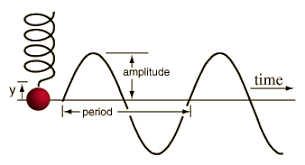
Think of a mass on a spring—when displaced from its resting position, it experiences a force pulling it back toward equilibrium. This back-and-forth movement creates a periodic pattern, characterized by properties like amplitude (maximum displacement), frequency (number of oscillations per unit time), and period (time taken for one complete oscillation).
Waves, on the other hand, are disturbances that propagate through a medium or space, carrying energy but not necessarily matter. They can result from periodic oscillations and exhibit properties like wavelength (distance between wave crests), frequency, and amplitude.
Both SHM and waves share common mathematical descriptions involving sinusoidal functions, making them fundamental concepts in understanding various phenomena in physics, from pendulum motion to light and sound propagation.
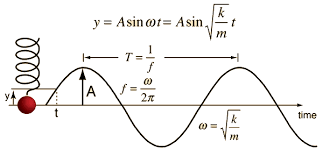

Certainly! Mechanical waves are disturbances that propagate through a medium, transferring energy without necessarily moving the medium itself. There are three primary types of mechanical waves:
1. Longitudinal Waves:
In contrast, longitudinal waves oscillate parallel to their direction of propagation. This means the particles within the medium move back and forth along the same axis as the wave itself. Sound waves in air or compression waves in a spring are great examples of longitudinal waves.
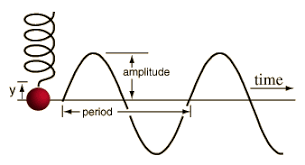
Longitudinal waves are a type of mechanical wave where the particles of the medium oscillate parallel to the direction of the wave’s motion.
Imagine a slinky: when you push one end back and forth, the coils compress, rarely along the same line as the wave travels.

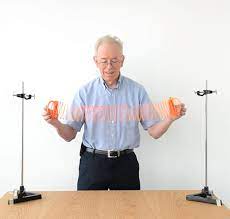

In these waves, areas of compression, where particles are closer, alternate with rarefactions, where particles are spread apart.
Sound waves in air are a classic example of longitudinal waves—molecules collide and create areas of high pressure (compression) and low pressure (rarefaction), transmitting sound energy through the medium.
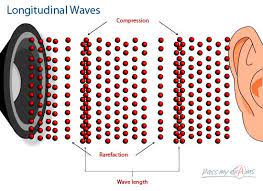
Understanding longitudinal waves is key to comprehending how sound travels through different materials and environments, impacting everything from music to medical imaging technologies.
2. Transverse Waves:
These waves oscillate perpendicular to the direction of their propagation. Picture the ripples on water—where the water moves up and down while the wave travels horizontally. Light and electromagnetic waves also behave as transverse waves.
Transverse waves represent a type of wave motion where the oscillation occurs perpendicular to the direction the wave is moving.
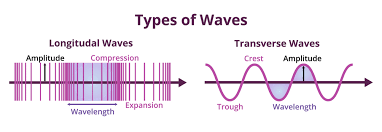
A classic example is the ripples on water: envision how the water’s surface moves up and down while the wave travels side to side.

Similarly, light and electromagnetic waves exhibit transverse behavior—their energy travels in a direction perpendicular to the oscillation of the electric and magnetic fields. Understanding transverse waves is fundamental to grasping phenomena like light propagation and various electromagnetic waves, which play pivotal roles in technologies such as telecommunications, imaging systems, and much more.
3. Surface Waves:
These waves occur at the boundary between two mediums, like the surface of water or the Earth’s crust. They combine characteristics of both transverse and longitudinal waves, exhibiting motion both parallel and perpendicular to the wave’s direction.

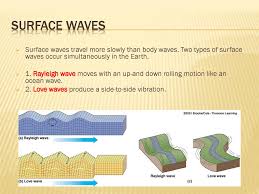
Understanding these types of mechanical waves is crucial as they play a vital role in various natural phenomena and technological applications, from the transmission of sound to seismic waves and beyond.
Waves As a Carrier of Energy:
Waves serve as remarkable carriers of energy across diverse mediums, facilitating the transmission of energy without the transfer of matter. This phenomenon is particularly evident in mechanical waves like sound, where vibrations pass through air molecules, causing them to collide and transfer energy from one point to another.
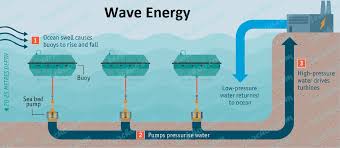
Similarly, electromagnetic waves, including light, transmit energy through space via oscillating electric and magnetic fields. This capacity of waves to transport energy is fundamental to various technological applications, from wireless communication and medical imaging to harnessing solar power.
Understanding the mechanisms by which waves convey energy is pivotal in harnessing their potential for innovative advancements across industries and scientific exploration.
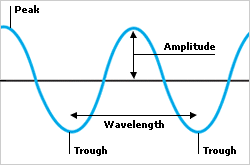
The energy of waves depends on the relationship between velocity frequency and wavelength.
The energy of waves is intricately linked to the interplay of velocity, frequency, and wavelength. The energy carried by a wave is determined by its frequency, which refers to the number of wave cycles that pass a fixed point in a given time. Additionally, wavelength, the distance between successive wave peaks, also influences energy. Moreover, velocity, the speed at which the wave propagates through a medium, further impacts the energy content of the wave.


Understanding this relationship between velocity, frequency, and wavelength is crucial in comprehending how energy is transmitted through wave phenomena.
FAQ:
1. What is Simple Harmonic Motion and its connection to Waves?
Simple Harmonic Motion (SHM) describes periodic motion where an object oscillates back and forth around a central point. In the context of waves, SHM relates to the oscillation of particles within a medium, producing wave propagation.
2. How do Longitudinal Waves differ from Transverse Waves?
Longitudinal waves involve particle displacement parallel to the direction of wave propagation, like sound waves. Transverse waves have particle displacement perpendicular to the direction of propagation, seen in phenomena like light waves.
3. What are Surface Waves, and how do they behave?
Surface waves occur at the interface between two different mediums, like water and air. They combine characteristics of both longitudinal and transverse waves, exhibiting complex motion patterns.
4. How do Waves carry Energy?
Waves transport energy through the vibration or oscillation of particles in a medium. The amplitude, frequency, and wavelength of waves determine the energy they carry.
5. Why does the Energy of Waves depend on Velocity, Frequency, and Wavelength?
The energy of waves is interconnected with their velocity, frequency, and wavelength. Higher frequencies or shorter wavelengths usually carry more energy, while velocity affects how quickly this energy propagates.
6. How is Wave Energy Transferred from One Medium to Another?
When waves encounter a boundary between different mediums, their behavior changes. Some of the wave energy may be reflected, transmitted, or absorbed, depending on the properties of the new medium.
7. Can Waves Transfer Energy without the Movement of Matter?
Yes, waves can transfer energy without physically displacing matter over a distance. This phenomenon is evident in electromagnetic waves like light, where energy propagates through space via electric and magnetic fields.
8. What role do Waves play in Everyday Energy Transfer?
Waves serve as carriers of energy in various forms, from radio waves transmitting signals to electrical energy conveyed through power lines and even the transfer of heat through infrared waves. Understanding waves is crucial in comprehending diverse energy transfer mechanisms in our daily lives.
4 comments